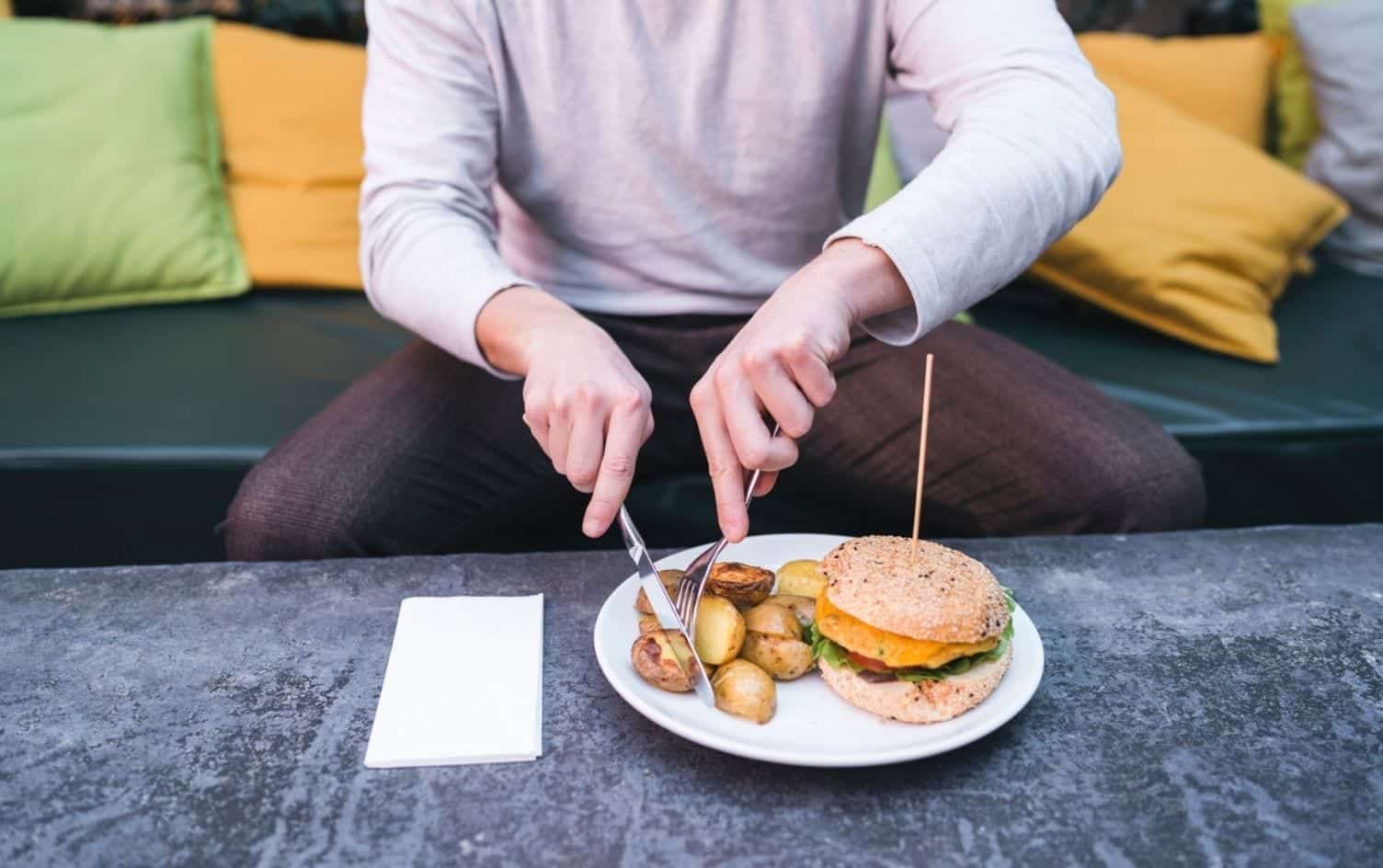Carbohydrates are the body’s main fuel, and how many carbs you should eat depends on several things. When broken down, carbs provide us with glucose, a preferred source of energy. Glucose travels through the bloodstream to support our cells, muscles, tissues and organs. Breathing, thinking, running, weightlifting — all of our daily activities are fueled by glucose.
Still, there are many myths surrounding carbs — and they’re unfairly demonized due to diet culture. When deciding how many carbs to consume per day, it’s important to assess your individual goals and take into account the quality of the carbs you consume.
HOW MANY CARBS SHOULD YOU EAT?
The Institute of Medicine recommends getting 45–65% of total daily calories from carbohydrates. The MyFitnessPal default recommendation is 50%, but that’s a starting point, which can be tweaked according to your specific needs.
Let’s say your total daily calorie target is 1,600 calories. If you are looking to eat around 50% of calories from carbohydrates, you’ll need to aim for 200g of carbs per day. The MyFitnessPal app calculates it automatically, but to get that number, you multiply daily target calories by 0.5 and then divide by 4 (since carbs contain 4 calories per gram). So, in the above example 1,600 X 0.5 = 800/4 = 200.
Ultimately, the number of carbohydrates you need to focus on consuming in a day depends on your goals. For example, an endurance athlete running a marathon needs more carbohydrates than someone whose goal is to lose weight.
If you’re looking to shed pounds, you may want to shift the percentage of calories from carbohydrates to 40%. In the example above, instead of 200g of carbs, your target would be 160g [1,600 X 0.4 = 640/4 = 160 grams].
Here’s a guideline for determining your carbohydrate needs:

WHY QUALITY OF CARBS MATTERS
All carbs fuel the body with 4 calories per gram, but not all carbs are created equal.
Carbohydrates from whole-food sources like fruits, vegetables and whole grains provide vitamins, minerals, fiber and health-promoting phytochemicals. These are also called complex carbohydrates and are made of longer chains of sugar molecules. Longer chains mean they take more time to hit the bloodstream and have a slower energy release, helping stabilize blood sugar levels. Complex also means they often come packaged with healthy fats and protein in addition to fiber. These are foods like brown rice, whole-grain bread, beans, legumes, sweet potatoes and whole-wheat pasta — all of which offer a much better bang for your calorie buck and support weight-loss.
Simple carbohydrates are made of easier-to-digest sugars. For endurance activities and weight training, these can be a very important source of energy. They hit the bloodstream very quickly and are known to produce a quick-release “sugar high.” Some of these simple sugars are naturally occurring — like those found in fruits and dairy products. More often, however, simple sugars are used in processed and refined foods like candy, white bread and sodas. They are common sources of “empty calories” or added sugars.
Simple sugars are OK on occasion and during certain training routines for athletes and performance regimens, but should not be your primary carbohydrate source. When you consume large amounts of added sugar, it can lead to weight gain and increase the likelihood of heart disease and diabetes. It can also upset sleeping patterns and disrupt the gut microbiome, which affects everything from digestion to our mood and energy levels.
WHAT HAPPENS WHEN YOU EAT TOO MANY CARBS
As mentioned earlier, the body needs carbs in the form of glucose for energy. But when you overdo it on carbs, the body stores excess glucose in the liver and muscles as glycogen. To get to the fat-burning stage, you need to use up your glycogen stores.
More glucose = more glycogen = harder to reach fat-burning stage.
WHAT HAPPENS IF YOU DON’T GET ENOUGH
A carbohydrate deficit can lead to weight loss, and it does for many people, which is why it’s become so popular to cut carbs. But remember: Carbohydrates are essential. They fuel our workouts, brains, muscles and organs. An extreme deficit in carbohydrates over time could affect cognition, lead to muscle loss and even impact gut health. Similarly, if you’re drastically cutting carbs, you might have cravings for sugary foods (a signal your body is looking for energy). This could lead to binge eating or other disordered habits and ultimately gaining the weight back.
The keto diet is an example of a popular, very-low-carbohydrate diet with a target of less than 50 grams in a day. For our 1,600-calorie example above, that’s roughly 12% of total daily calories from carbohydrates.
Here’s what 50g of carbohydrates looks like:
- 1 cup brown rice + 1/2 cup roasted broccoli
- 1 whole-grain bagel + 1 tablespoon cream cheese
- 3/4 cup bran flakes (22g) + 1/2 cup blueberries (21g) + 1/2 cup oat milk (7g)
- 1 5.3-ounce container strawberry Greek yogurt + a small vanilla latte
While the keto diet might be right for some people, if you’re using it more as a quick fix rather than a lifestyle change you can sustain long term, you might want to rethink it.
THE BOTTOM LINE
Carbohydrates play an important role in our everyday health and shouldn’t be feared. Both simple and complex carbohydrates can be part of a healthy, well-balanced diet. It’s extremely important to focus on quality, in addition to quantity, especially if you’re choosing to follow a low-carb eating style. Prioritize carbs from whole-food sources like ancient grains, fruits and vegetables. Keep a food log and notice how the amount of carbs you consume affects your energy and your waistline. From there, you can continue to adjust the amount you consume depending on your goals. If you need help to get started, reach out to a registered dietitian who can create an individualized plan.
Discover hundreds of healthy recipes — from high protein to low carb — via “Recipe Discovery” in the MyFitnessPal app.




